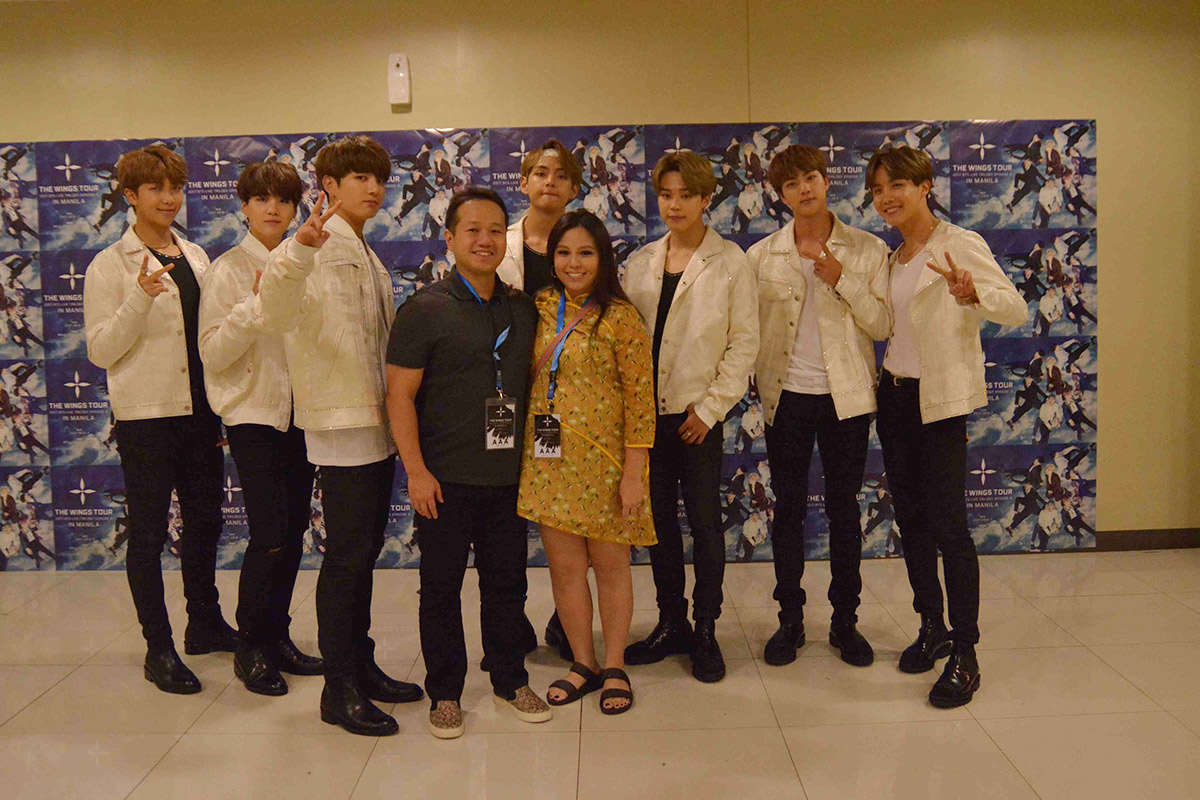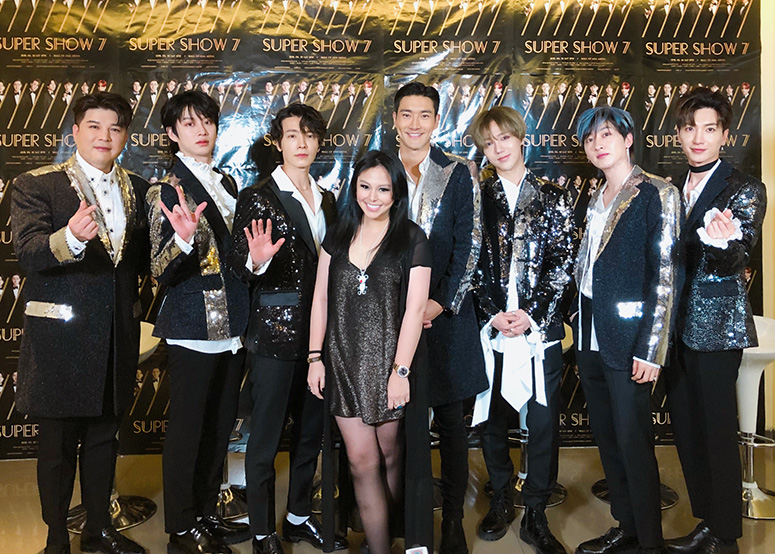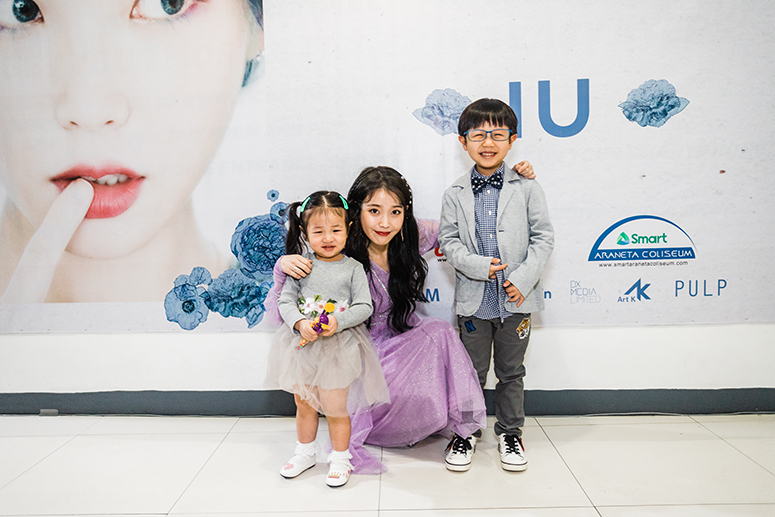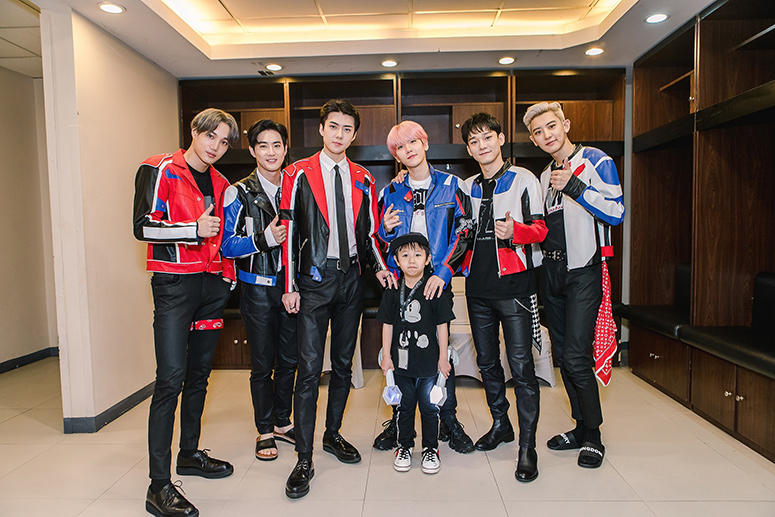How a love story happened when hard rock met K-pop
Just like a romantic song, K-pop made its way into the country because of love. Vernon Go, meanwhile, was known for championing rock and roll, specifically heavy metal.
Through the 2000s, Vernon’s ultra-cool and edgy Pulp Magazine featured true-blue rock stars, their music and lifestyles. As an extension of this, he brought in international musicians for mega-concerts and wild rock shows, including one with the legendary Aerosmith.
From rock concerts, Vernon’s company pivoted to the unexpected genre of K-pop, when he met future wife Happee Sy in 2007. Happee was a K-popper, an early fan before the trend even blew up globally. One day she showed Vernon a video performance of Super Junior and he asked her who of the 12-member boy group was Super Junior; he was that clueless when it came to K-pop. Since he was smitten with her, he wanted to get Super Junior to do a concert here.
Vernon says now, “I fell in love and wanted to do anything to impress this person.” Did he know that K-pop had a following at that time? “To be honest, I really didn’t care, I just wanted to get the girl.”

Winter and London).
With the help of his mom, Grace Glory Go, and a diplomat friend, calls were made. Within 24 hours, the boy group’s management contacted Vernon and it was a done deal. Super Junior’s Super Show 2 was the first full-scale K-pop concert held in the Philippines. This was in 2010, more than a decade before K-pop had reached fever levels here.
The early days of the K-pop journey for Vernon, Happee and their company Pulp Live World were not easy. First was the cost of K-pop concert productions. American or European rock bands usually bring in 40 or so people, but K-pop concerts would typically bring in 90 to 120 people.
“It was crazy expensive,” according to Vernon. Furthermore, Pulp’s following was mostly rock fans who couldn’t understand the shift to K-pop. Back then, K-pop was not taken seriously, laughed at, and even ridiculed.

Pulp’s Facebook page was inundated with negative comments defaming and accusing them of selling out. To make matters worse, K-pop fans themselves were wary of the pitch. Back then, these fans had been burned by shady organizers asking for money to finance scam concerts. They couldn’t believe that a company was legitimately bringing in K-pop artists to perform.
In the words of Vernon, the flipside to this was “what a wonderful experience it was to discover the world of K-pop. We would even go to Korea and meet the main players. We totally immersed ourselves in this whole new culture.”
The Korean production teams stick to exact specifications and have a high level of technical precision. They expect their concert to be done exactly as it is done in Korea. If not, they will not do the show.
Fast forward to now: Pulp Live World organizes and promotes almost all of the K-pop concerts that are held in the country. They are the pioneers in bringing these performances to our shores.
Some of the major Korean groups and artists they have brought in include Bigbang, BTS, Seventeen, IU, Winner, Exo, Got7, 2NE1, Twice, Vixx, and so many more.
Beyond K-pop, they have also held local fan meetings with famous Korean actors Park Hyung-sik, Lee Jong-suk and So Ji-sub. They were also bringing in the wildly popular cast of Korean variety show Running Man pre-pandemic, but the show had to be postponed to a later date.
There is a great distinction between working with western rock stars and K-pop groups.
Vernon observes that there is a difference in their cultures. “Western artists are more personable. You can hang out with them and have a beer, while K-pop artists are more reserved. They only mingle with people if it’s official. Everything is planned and nothing is extemporaneous. They have to be given space.”
I myself witnessed Vernon casually chatting with Aerosmith’s Steven Tyler at the entrance of Raffles Makati sans entourage a few years ago. It was like he was shooting the breeze with an ordinary person, not a superstar who’d been inducted into the Rock & Roll Hall of Fame.
Vernon continues that, in terms of production, the rock artists’ crews were more flexible; they could work with the local situation and make it work. On the other hand, the Korean production teams stick to exact specifications and have a high level of technical precision. They expect their concert to be done exactly as it is done in Korea. If not, they will not do the show.

Also, their work schedule is grueling. Vernon says, “It is not uncommon not to sleep.” The K teams are on the nail, which isn’t always compatible with the Filipino work style. As expected, there can be times when tempers flare. It’s all worth it, though. I personally watched four K-pop concerts — namely that of Exo, IU, Super Junior and Winner — in the last six months prior to the pandemic, and I can attest to their impressive and high level of production.
Wow, I thought, it’s as spectacular as a Madonna or Beyoncé concert.
Fandoms
Then there are the K-poppers and their ever-loyal fandoms that are tireless supporters. Deep K-pop fans have a sincere and solid emotional connection to their favorite artists.
According to Happee, these fans attend all concerts, show up at live appearances, purchase original albums and merchandise, send wreaths and gifts all the way to Korea during openings, launches, and the like, even rent billboards for special messages to their artists.
“You know the globe in MOA? It is always rented by K-pop fans.” They also contribute to the artists’ charity or organize charitable projects, like the recent community pantries, in honor of their idols.
Here’s some trivia: Filipino fans are known to give gifts such as native delicacies and crafts to their idols, which is heartwarming. Many K-pop artists have said that they can feel the love of Pinoys because of such gestures. In fact, they consider Filipinos to be the loudest fans — in a good way, of course. At concerts, the fans sing every song out loud, and in Korean.
On the other hand, rabid fans or stans are a different matter. They are “sasaeng” fans. Sasaengs are delusional and obsessed with their idols and act in ways that cross boundaries.
Happee recalls that there was one hardcore fan who hid inside the hood of the van of a K-pop boy group. From the hood, she then got to sneak inside the van and hid at the back. She was with them all throughout their way to the airport.
Happee recalls that there was one hardcore fan who hid inside the hood of the van of a K-pop boy group. From the hood, she then got to sneak inside the van and hid at the back. She was with them all throughout their way to the airport.
Then one group member noticed movement and saw her. You know what she was doing? She was crying with happiness. Cue: scary music soundtrack! You can just imagine how shocked the boys were. Well, they all ran out of that van really quick. Their security was furious and filed a legal case against this “sasaeng.”
Another case was of fans unbelievably breaking the glass panels at the exit area of NAIA while waiting for their idol group to depart. They wanted to hand over gifts to the boys as they passed. Instead, those glass walls cracked big-time. It must have been the pressure due to pushing. Pulp Live World had to replace those panels at the airport with tempered glass.

December, 2019.
Knowing the possibilities of these rabid fans’ actions, on top of a local security group, Pulp flies in their own Korean security for these events. In fact, the head security of the Korean team, Mr. Jeong, has his own fans because of his good looks. He’s an oppa. I saw him in a concert venue and mistakenly thought he was part of the K-pop idol group. His team is dedicated to protecting the artists.
Among the K-pop groups, Happee says they are closest to Super Junior as they have seen them grow. The SuJu team has witnessed Vernon and Happee dating, being married, having children. Happee even unexpectedly gave birth during one of their concerts here.

K-pop never stops.
Even during this pandemic, Happee organizes various fan happenings in KmmunityPH, online music listening parties, fan club nights, and other live events through her super-popular social media channels such as @happeehour on Twitter and Happee Hour in Facebook. She lives and breathes K-pop. Well, so do the many, many fans.
So how does the future of K-pop concerts look, post-pandemic? Here’s a hint. The shows slated for 2020 weren’t canceled. They were just postponed to early 2022, so they will still happen. Citing the attitude of the Roaring Twenties youth following the end of the Spanish Flu, Vernon believes that “at some point, K-pop concerts will be back.” And I am certain that they will be back in a big way.


